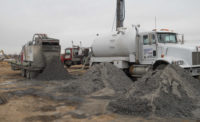Sales of HVAC equipment ticked upward in 2016, according to Air-Conditioning, Heating, and Refrigeration Institute (AHRI), which reported that 2016 year-to-date combined U.S. shipments of central air conditioners and air-source heat pumps increased 7.6 percent over 2015 and shipments of gas warm-air furnaces increased 4.6 percent for the same time period.
These figures come on the heels of some sobering news from the Bureau of Economic Analysis, which reported that the real gross domestic product (GDP) of the U.S. increased at an annual rate of just 1.9 percent in the fourth quarter of 2016. For the year, real GDP expanded by only 1.6 percent, which is the slowest pace of growth since 2011, and that lackluster trend may continue, according to the Congressional Budget Office (CBO), which projects that GDP will expand at an average annual pace of just 2.1 percent over the next two years.
Even so, manufacturers are hoping for strong sales in 2017.
GROWTH IS ANTICIPATED
“We saw good growth in 2016, but we continue to raise the bar and are looking for even greater growth in 2017,” said Bill Jackson, president – global products, Johnson Controls Inc. “With consumer confidence improving, unemployment rates coming down, and existing home sales rising, we’re seeing a healthy replacement market. We’re also seeing growth in new construction in southern markets, although it’s still well below where it was at its peak, and we’ve seen a slowdown in the multifamily space. The light commercial market continues to do well, and we have seen a pickup in that space, as well.”
Despite some tough weather at the beginning of the year and in the early fall, Honeywell Intl. Inc. ended the year on a very positive note, said Nate Kraft, senior director of global connected home, Honeywell. “There were a few categories where we saw a huge leap forward in sales, like Wi-Fi thermostats, which had incredibly high growth rates even off a fairly robust base.”
In fact, 2016 was the year when connected thermostats started to edge out non-connected units on a dollar basis, said Kraft.
“Non-connected units still lead the market in terms of volume, but because the volume of the Wi-Fi market keeps growing at a good clip and the value of these devices remain high, the overall thermostat market is now in a transition,” he said.
In 2017, Honeywell expects to see more residential new construction activity because there are currently not enough homes out there for all of the renters who are looking, said Kraft.
“Both single-family and multifamily housing are looking strong in 2017,” he said. “It’s great to see the builder market gaining steam.”
Thanks in part to an unusually hot summer, Goodman Mfg. Co. also saw strong growth in 2016 and has expectations for a good year in 2017, as well, said Jeff Underwood, vice president of marketing, Goodman business unit. “It’s a bit difficult to make an accurate forecast for 2017 until we more fully understand how the actions of the new administration will impact the national economy. Regardless, we anticipate that new construction will start strong, although it will be down from its 2016 levels as multifamily rent prices have stabilized in many markets. Moreover, residential demand should continue to provide HVAC manufacturers with a growing market, in part due to the higher price of units that comply with new regional energy-efficiency standards.”
As for ductless systems, they continue to be on a tear, with Fujitsu General America Inc. reporting sales of these units grew 34 percent last year. “The ductless market has grown in double digits for several years, and we see that trend continuing into 2017,” said Tom Carney, director of sales, Fujitsu General. “Multifamily homes are increasingly using our systems, especially in the Northwest and Northeast parts of the country, where state and utility rebates are high for energy-efficient products. In addition to wanting more energy-efficient systems, consumers want the ability to control their systems remotely, which is why manufacturers are introducing Wi-Fi-enabled HVAC systems. This way, consumers can experience true home automation in every area of their lives.”
The growth potential for ductless and variable refrigerant flow (VRF) technology in 2017 and beyond continues to be strong in the U.S. market with no slowing down in sight, said Kevin Miskewicz, director of commercial marketing, Mitsubishi Electric US Inc. Cooling & Heating Division. “We anticipate the demand for energy-efficient and easy-to-operate HVAC systems along with a growing expectation for connectivity to continue its upward trajectory.”
LINGERING CONCERNS
Even though Miskewicz remains optimistic about the future growth of ductless and VRF equipment, he is closely monitoring regulations surrounding HVAC refrigerants. “Due to the recently announced phaseout of hydrofluorocarbons [HFCs], the ductless market will see changes in the next five to 10 years, but we also see opportunity in continuing to create highly efficient HVAC systems for homes and buildings.”
While supportive of smart regulation of appliances and chemicals, Johnson Controls believes recent regulations affecting air conditioners and refrigerants have created conflicts between U.S. Environmental Protection Agency (EPA) and U.S. Department of Energy (DOE) and could eliminate an affordable air conditioning option from the residential market. “We hope Congress and the Trump administration will work to improve these regulations by providing greater consideration to the cost impacts on consumers and by harmonizing regulation between the DOE and the EPA,” said Jackson. “With the ever-changing regulations around HVAC, dealers are faced with understanding how they apply in their markets and being able to find the right solution for their customers that meet their needs from performance and economic perspectives.”
Another regulation that is of concern to manufacturers is the DOE’s energy conservation standard concerning residential furnace fans.
“The regulation essentially outlines the discontinuation of PSC [permanent split capacitor] motors on gas furnaces starting in 2019,” said Joe Leonard, senior marketing manager of distributor development, Allied Air.
In order to comply with the new standard, manufacturers will have to replace the permanent split capacitor (PSC) motors often used to drive furnace fans with more efficient motors, such as brushless permanent magnet (BPM) motors — also known as electronically commutated motors (ECMs). This could raise costs for manufacturers as well as consumers.
Many homeowners are still opting to repair rather than replace, said Underwood, which could affect sales of new units this year.
“The data we’ve reviewed leads to the conclusion that homeowners always seem to lean toward repairing a central HVAC system when the initial breakdown occurs, even though there are instances where homeowners are aware their current systems are very old and likely not worth repairing,” he said.
The good news is that when consumers are faced with replacing their HVAC systems, they seem to be listening to the advice of their contractors, which is why contractors should be presenting a range of equipment choices to consumers, said Underwood.
“When dealers present the benefits of high-efficiency systems, homeowners tend to purchase these systems,” he said. “When dealers do not offer high-efficiency systems, homeowners have no options to consider these types of products.”
Another opportunity for manufacturers and contractors alike exists in the realm of connectivity and the Internet of Things (IoT).
“More and more, our industry is being asked to capture building data and make it meaningful,” Jackson said. “That could be spectator trends at a sports arena, temperature monitoring in a hospital, or energy usage at a university — the potential to harness facility information is almost endless,” said Jackson.
Kraft agreed, noting all of the new technology, such as connected thermostats and distributed sensors, that will drive HVAC into the next decade already exists in some form, but how it all comes together is yet to be decided.
“At Honeywell, we see a great future for more integrated connected offerings: Healthy home portfolios working in concert with sensors and thermostats to save money and help homeowners breathe easier, the local utility helping to make it so every degree of comfort can be quantified so homeowners can make smarter energy consumption choices, and so on. It’s an exciting time to be in this space.”
Publication date: 3/15/2017
Want more HVAC industry news and information? Join The NEWS on Facebook, Twitter, and LinkedIn today!










